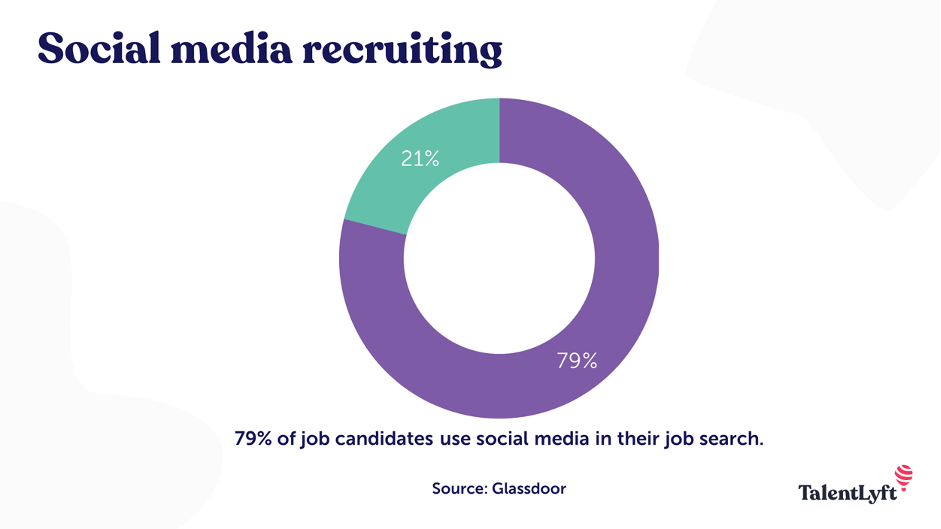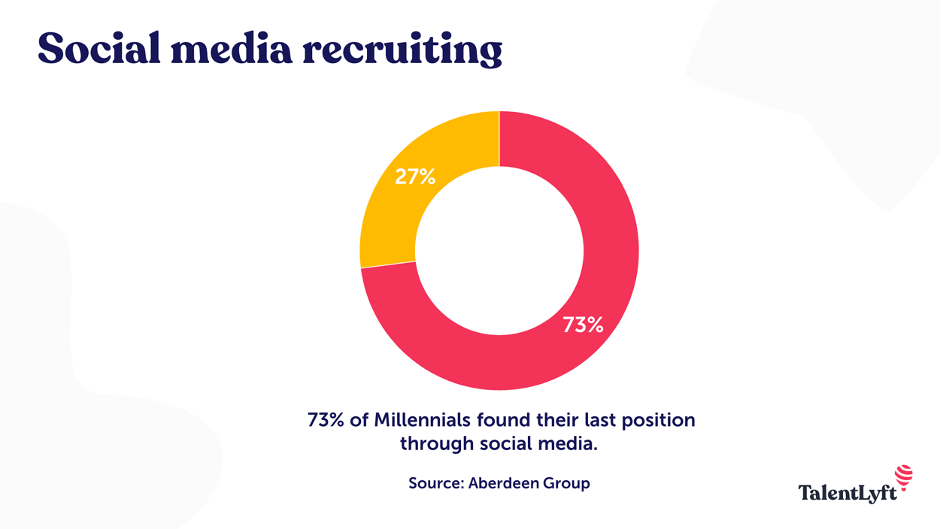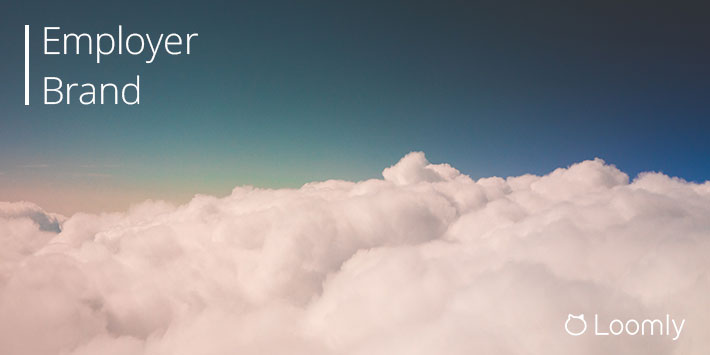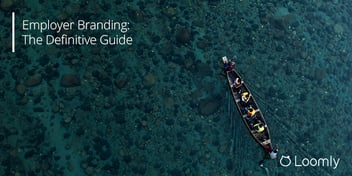Employer Branding FAQ
Employer branding is non-negotiable in today’s candidate-driven market.
But what makes a good employer brand? And how do you measure employer branding?
We’ve got the answer to those questions and more in the employer branding FAQ below so that you can become one of the top employer brands in the world.
Table of contents
What is employer branding?
Employer branding is how you attract and engage potential employees and make the prospect of working for your business truly exciting.
The process involves promoting your organization as the employer of choice to your desired target market.
By telling an authentic story about what it is like to be a part of your company and work toward your mission, you can entice candidates who think and feel and strive for the same.
In fact, 72% of employers believe employer branding has a significant impact on the hiring process, and 75% of candidates take an employer’s brand into account before even applying.
Companies need to attract, recruit, and retain these ideal employees – referred to as “top talent” in recruitment – to meet their business objectives.
What are the benefits of employer branding?
The benefits of employer branding are all closely linked. And they all play a crucial role in finding, attracting, and retaining top talent.
1. Lower cost per hire
Employer branding helps to lower your Cost Per Hire (CPH).
A strong employer brand fosters a great work environment, which, in turn, encourages current employees to refer your company to other like-minded professionals. Candidates recruited through referrals are the second cheapest means of employee sourcing.
2. Better talent pool
Employer branding increases your talent pool from which you can fill vacancies.
As you develop and refine your reputation as an excellent place to work, you will attract exceptional talent. These potential candidates build your talent pipeline or talent pool. This also reduces your cost of recruitment because you won’t need to spend money on advertising.
3. Reduce time to hire
Talent pools can also reduce your time to hire.
Talent acquisition teams can build and maintain your talent pools, screening and qualifying the candidates long before you need them. Then, when a position becomes available, you can quickly select from the best suitable candidates, with minimal disruption to your current employees and day-to-day operations.
4. Engaged employees
One of the most significant benefits of employer branding is employee engagement.
As well as attracting potential candidates, your company should offer your current employees a great working environment, career development, personal growth, and constant motivation.
Employees that enjoy their work are more productive and often perform better.
5. Lower employee turnover
Engaged employees are passionate about their job and love their place of work. Consequently, they feel more committed and are more likely to stay with you for years to come.
The benefits of low staff turnover mean you will spend less on advertising, recruiting, and training new staff.
What makes a good employer brand?
A good employer brand invests in employees and builds an employer value proposition (EVP) that allows them to attract talented people and retain top performers.
For example, L’Oréal is consistently honored as one of the world’s best places to work. They developed a new EVP back in 2012 by soliciting input from their employees.
L’Oréal created a clear and consistent employer branding message to attract and retain top talent worldwide. Its employer marketing portrays the company as a thrilling experience, an inspiring company, and a school of excellence.
Another example is retail giant John Lewis. They have been in business 150 years and are a trusted brand.
Since its inception, its partnership model has been commended as a best practice model of employee-employer relations. Their training is second to none, and the staff delivers on the “brand promise” with exceptional customer service.
Employees are afforded a share of the profits and also given a say in how the business is run. John Lewis employees are also encouraged to think for themselves and show initiative in dealing with customer queries.
What are the best employer brands in the world?
Hired — the marketplace that matches tech talent with the world’s most innovative companies — surveyed more than 3,800 top tech workers from their platform to determine which companies rank as their most desirable employers and how other organizations can compete for their attention.
Top 15 Employer Brands: Private Companies
- Airbnb
- SpaceX
- Hulu
- Kickstarter
- WeWork
- Indeed
- Robinhood
- Stripe
- Squarespace
- Virgin Hyperloop
- Quora
- JPL
- Instacart
- Coinbase
Top 15 Employer Brands: Public Companies
- Netflix
- Apple
- Microsoft
- Slack
- Amazon
- GitHub
- Dropbox
- Tesla
- Adobe
- Lyft
- Walt Disney
How do you build a strong employer brand?
Companies can no longer rely exclusively on creative recruiting efforts and advertising to build their employer brand image. Instead, they need to focus on existing employee satisfaction and the kind of advocacy those individuals can share across their online networks to build a strong employer brand.
1. Evaluate your employer brand awareness and reputation
Start with a poll or survey of key external stakeholders and target audiences to measure the pulse of your company’s reputation. Also, survey existing employees to gather insights into the attractiveness of the business.
2. Invest in learning and development initiatives
Millennials – who are expected to make up 75% of the workforce by 2025 – expect opportunities to learn new skills and develop existing ones.
Research by Gallup reported that over half of Millennials rated learning and development as “extremely important” when applying for a job.
3. Capitalize on the value of your brand
Employers that can demonstrate their strengths effectively can engage talent early and instill loyalty that is directly related to the brand’s overall mission.
Some brands, like L’Oréal, go so far as to create a website dedicated to communicating their brand ethos to prospective employees. Entitled “L’Oréal Talent”, the site shares who they are, what they represent, what their employees can be, and what they offer as an employer.
4. Personalize the candidate and employee experience
A key factor in talent retention is for employers to nurture a workforce that knows they are more than just a number. Here are three ways to do that:
First, by mapping out a career roadmap, employees will have a clear and documented process to help them advance through the company.
Second, by recognizing employees for their efforts, either on a digital forum such as social networks or at a quarterly event, helps employers create a motivated work environment.
Third, by nurturing relationships with their employees – so they know more than what their day to day role is – helps employers to connect with employees as people.
5. Communicate internally
Communication is crucial to ensure every function in the organization understands the value and need for building a strong employer brand, and the role they can play.
For example, the Commonwealth Bank of Australia embraced this concept by creating a custom-built smartphone app so that employees could manage all aspects of their employment experience, from accessing the employee directory to pay and time tracking.
6. Create an employee advocacy program
According to Edelman research, employees are essential advocates and the most trusted group over and above C-level executives to communicate on various topics.
By letting staff know of innovations or developments in the company, employees can share news and increase the reach of company content and increase brand awareness.
To encourage sharing, employers can create reward schemes to recognize the efforts of individuals.
Why is social media so important for employer branding?
Today’s candidates are digitally savvy, and they spend many hours each day on different social media networks. They also use social media to research potential employers.
According to Glassdoor, 79% of job candidates use social media in their job search:

So, promoting an Employer Brand on social media has become necessary for companies who want to attract top talent.
It seems that employers are very aware of that. According to research, 76% of companies choose social media to communicate their Employer Brand because new generations are on social media non-stop.
According to the Aberdeen Group, 73% of Millennials found their last job through social media:

If you want to reach these new generations, you simply have to promote your employer brand on social media.
Fortunately, social media is a simple, fast, and affordable way to target the right people and promote your Employer Brand.
How do you measure employer branding?
Here’s how Glassdoor recommends measuring your employer branding:
1. Gather baseline data
Typical measures include:
- Cost-per-hire
- Time-to-hire
- Candidate quality (ratio of qualified applicants to total applicants)
- Cost-per-qualified-candidate (if using job posts or paid sourcing)
- Retention rate
- Employee engagement
- Employee satisfaction
- Quality-of-hire
2. Gather third-party data
For example, Glassdoor metrics include:
- Overall company rating
- CEO approval rating (% that approve)
- Business outlook (% positive)
- Recommend to a friend (% yes)
- Profile views over time
- Demographics
3. Gather qualitative data
Track qualitative feedback from employees and candidates via Glassdoor reviews, employee surveys, and/or focus groups.
4. Consider your goals
As you examine your metrics, consider the overall goals of your employer branding program.
For example, if your goal includes improving culture by offering development opportunities, pay close attention to retention rates and employee engagement.
On the other hand, if your goals are primarily recruiting-based, such as reducing hiring costs or making many hires to fill out a specific team, you’ll want to track metrics like cost-per-hire, time-to-hire, and quality-of-hire.
5. Set a reporting schedule
Without a time-based plan, you may forget to monitor your employer brand and miss out on key successes or opportunities for improvement. Try the following schedule:
- Weekly: candidate quality.
- Monthly: Cost-per-hire, time-to-hire, applicant-to-hire, candidate demographics, recommendations, ratings against competitors.
- Quarterly/annually: Overall themes and sentiment, retention rate, quality-of-hire, employee engagement, ratings trends, CEO rating.
Summary:
With a clear picture of the metrics to track based on your goals and a reporting schedule, you’ll learn how well your efforts worked. Plus, you’ll have real-world data to inform and build the case for next year’s employer branding programs (and budget).

Manage all your social media accounts in one place.
Craft, schedule, & auto-post content to all your social channels, then track analytics and manage interactions from a single, easy-to-use dashboard.
Employer Branding in a Nutshell
Employer branding is essential if you want to attract, recruit, and retain the top talent in your niche and achieve your business objectives.
Digital savvy candidates also expect brands to promote themselves, so it cuts both ways:
According to a LinkedIn survey, 72% of employers believe employer branding has a significant impact on the hiring process, and 75% of candidates take an employer’s brand into account before even applying. (And if they don’t like what they see, 69% of candidates won’t apply – even if they are unemployed!)



